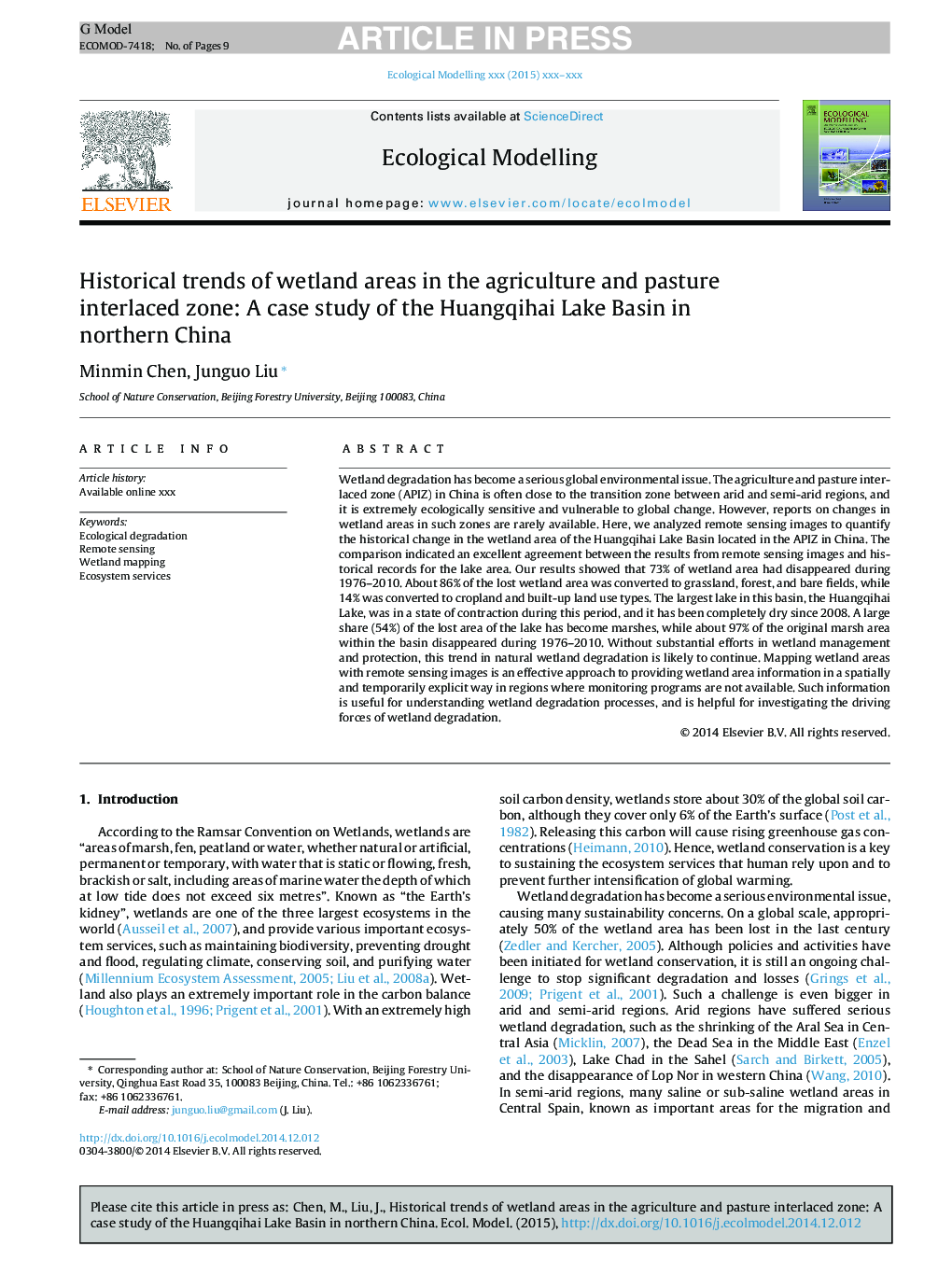| Article ID | Journal | Published Year | Pages | File Type |
|---|---|---|---|---|
| 6296405 | Ecological Modelling | 2015 | 9 Pages |
Abstract
Wetland degradation has become a serious global environmental issue. The agriculture and pasture interlaced zone (APIZ) in China is often close to the transition zone between arid and semi-arid regions, and it is extremely ecologically sensitive and vulnerable to global change. However, reports on changes in wetland areas in such zones are rarely available. Here, we analyzed remote sensing images to quantify the historical change in the wetland area of the Huangqihai Lake Basin located in the APIZ in China. The comparison indicated an excellent agreement between the results from remote sensing images and historical records for the lake area. Our results showed that 73% of wetland area had disappeared during 1976-2010. About 86% of the lost wetland area was converted to grassland, forest, and bare fields, while 14% was converted to cropland and built-up land use types. The largest lake in this basin, the Huangqihai Lake, was in a state of contraction during this period, and it has been completely dry since 2008. A large share (54%) of the lost area of the lake has become marshes, while about 97% of the original marsh area within the basin disappeared during 1976-2010. Without substantial efforts in wetland management and protection, this trend in natural wetland degradation is likely to continue. Mapping wetland areas with remote sensing images is an effective approach to providing wetland area information in a spatially and temporarily explicit way in regions where monitoring programs are not available. Such information is useful for understanding wetland degradation processes, and is helpful for investigating the driving forces of wetland degradation.
Related Topics
Life Sciences
Agricultural and Biological Sciences
Ecology, Evolution, Behavior and Systematics
Authors
Minmin Chen, Junguo Liu,
